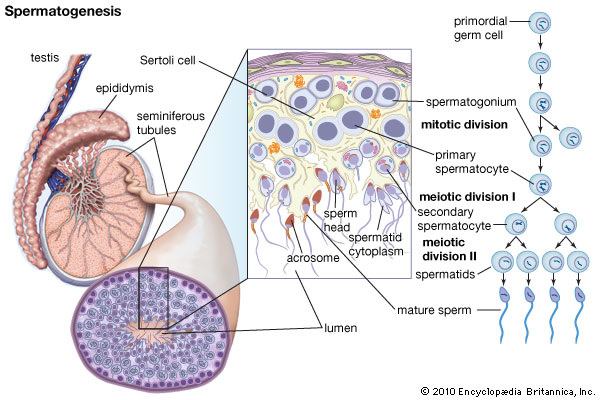WEEK 6 - JULY 19
Konnichi wa from the Primate Research Institute (Week 6; July 19 – 26)
I’ve entered the second half of my EAPSI fellowship, and I can only hope that it’s as great as the first half in terms of meeting new friends and colleagues, developing new skills in molecular biology, and engaging in Japanese culture. I’d like to think that this past week captures some essence of the scientific pursuit – not everything goes according to plan, but a good scientist will always develop another hypothesis and continue testing. In my first section, I’ll outline some of the details of how our research goal has slightly shifted. In the latter part of the blogpost, I’ll describe some enjoyable cultural experiences from the last few days. Overall, this week was a great learning experience with many thanks to Dr. Imamura, his graduate students, and many other helpful colleagues here at the PRI!
Spermato-genesis: A Biological Creation Story
A detailed understanding of spermatogenesis is probably not common knowledge. So, just like how I provided some theoretical background with RT-PCR a few weeks ago, I’d like to quickly cover some of the basic processes of sperm production. Afterwards, I’ll talk about how our research goal has shifted, as well as some of the logistical changes that we made going forward for the next month.
Let’s see, it’s best to start with where spermatogenesis occurs. If your first thought is in the testes (plural; singular is testis), you are correct. In general, the testes are male reproductive organs that contain structures for producing sperm called seminiferous tubules. If you look inside these tubules, you’ll see that sperm is produced starting from the membrane of the tubule and then they migrate into the center after cell division, aka meiosis. This general process, in which a primordial germ cell develops and divides into functional spermatids, varies widely across different sexually-reproducing species. Furthermore, spermatogenic mechanisms are subject to environmental factors, such as seasonality and food abundance, as well as behavioral components, i.e. mating systems and mate competition. Given all of these sources of variation, the need to investigate these mechanisms across a number of biological models becomes ever more apparent.

The molecular dynamics of sperm production are well understood in humans and some rodent and South American primate models. However, such mechanisms have been far less studied in Old World primates, hence our study of the Japanese macaque. Source: https://www.britannica.com/science/spermatogenesis
Shifting the Focus
As I mentioned, our research team had to shift our focus from the seasonal reproduction study and towards another under-studied aspect of Japanese macaque biology: age-related spermatogenesis. Some of our samples are lacking exact information regarding the breeding vs. birthing season, so we can’t use them for addressing our primary question of seasonal reproduction. (This is something the NSF officials warned us about at our orientation in Washington, D.C. – always have a backup plan in case an unforeseen issue arises.) So until we can either find out more information about these samples or perhaps come across new samples, my research project will incorporate juvenile and adult macaque tissue. This will allow us to compare the genetic and protein interactions between reproductively active adults and reproductively inactive juveniles.
In the meantime, I’ve continued collecting RT-PCR data in order to see the expression levels of various genes. The immunohistochemistry is still on the back-burner until we finish seeing what genes are expressed, and I’m very excited to use this technique to see where and when they’re expressed! Time keeps flying by here in Japan, and there is still so much left to learn! Fortunately, I intend to maintain great connections with my PRI colleagues, and that will allow us to continue collaboration beyond the completion of my summer project and subsequent return to the U.S.
Nagoy-ing, going, gone!
Over the weekend, I was able to head to Nagoya for a short break. It started with a Friday evening baseball game with 11 other PRI faculty and students – the Chunichi-Nagoya Dragons vs. the Tokyo Swallows! It was a great opportunity to spend time with some colleagues and enjoy a familiar American pastime, albeit with some really cool Japanese innovations like bringing a marching band into the fan section to lead cheers! After the game, I joined some EAPSI Summer Program fellows at Nagoya University, and then we spent most of Saturday sightseeing, including a visit to the Toyota Museum.


Georges and Dena (other EAPSI fellows) and I at the Toyota Museum, plus me next to a classic Celica. Did you know Toyota started out making textiles and cloth before taking the automotive and technology industry by storm? Talk about a literal “rags to riches” story!
All in all, this week was another success. Our research team was able to address an issue with some samples, shift our research goal toward another important aspect of primate reproduction, and I was able to take a quick trip to visit some Summer Program friends! I’m looking forward to collecting more data next week, as well as giving a guest lecture at Kyushu University over the weekend. Check back next week to hear how it all went. As always, matane!
This research is funded by the National Science Foundation East Asia and Pacific Summer Institutes for U.S. Graduate Students (EAPSI) in collaboration with the Japan Society for the Promotion of Science (JSPS).


